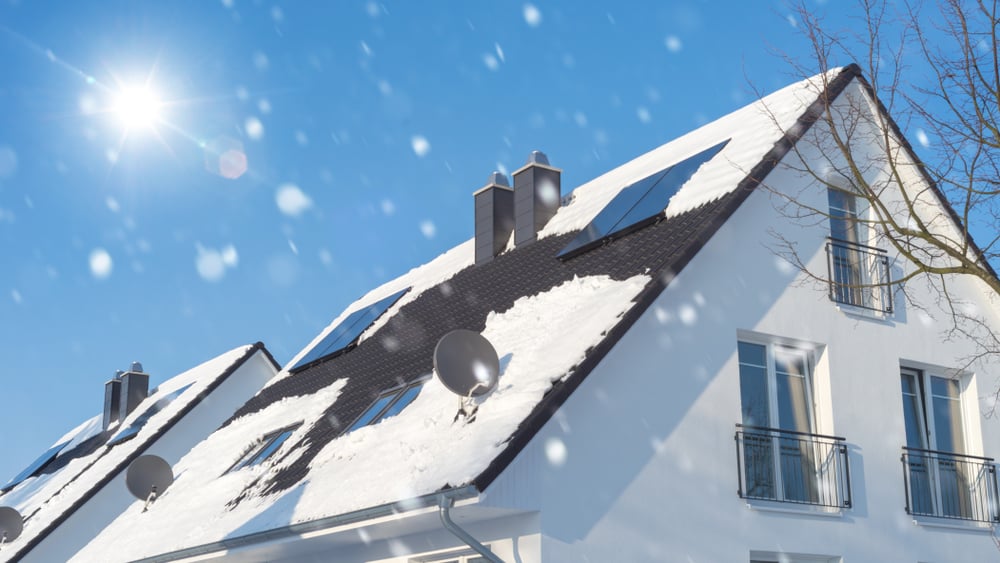Did you know that replacing your roof can cost anywhere between $15,000 and $40,000 for an average home in Vancouver Island? This kind of investment is essential, but it could be a complete waste of money if you don’t consider one crucial factor: the weather. Timing your roof work without factoring in the local climate could lead to poor installation, potential damage, and higher repair costs down the road.
On Vancouver Island, fall provides the ideal conditions for roofing. The cooler temperatures ensure that shingles adhere properly, avoiding the warping or breaking that can happen in hotter months. Plus, fall typically brings fewer rain disruptions, meaning your roofers can work efficiently, ensuring a solid installation before the wet winter sets in. Taking action now not only helps protect your home from the heavy rains but can also save you from unexpected costs down the line.
Recently, many of our customers have been asking the same question: “When is the best time to work on my roof?” To help clear things up, we’re breaking down each season, ranking them from best to worst, and explaining why fall stands out as the top choice. This way, you can confidently plan your roof work and get the most out of your investment.

Here’s a clear breakdown of the best and worst seasons for roof work on Vancouver Island, ranked from 1 to 10. This table will make it easy to understand the pros and cons of each season based on local weather conditions:
| Season | Rating (1-10) | Explanation |
|---|---|---|
| Winter | 1/10 | The cold, wet, and unpredictable weather in Vancouver Island’s winter makes roof work risky. Shingles struggle to adhere, and constant rain can lead to delays. It’s also harder to find roofers during this time, and safety risks are higher. |
| Spring | 4/10 | While spring brings milder temperatures, the weather can be highly unpredictable, especially in March and April. Sudden rainstorms can cause delays, and the wet conditions make it harder for materials to set properly. However, late spring is more manageable if planned well. |
| Summer | 7/10 | Summer offers stable weather and long daylight hours, which are great for roofers. However, extreme heat can cause shingles to warp or stick together. If the work is scheduled for early or late summer, when the heat is moderate, it’s one of the better times for roofing. |
| Fall | 10/10 | Fall is the ideal season for roof work on Vancouver Island. The cooler temperatures help shingles adhere properly, and there are fewer weather disruptions compared to winter. This is the best time to get your roof done before the heavy winter rains set in. |
Here’s why it’s important to fix your roof in the fall if you live in a wet, mild climate that experiences heavy rain and cool winters:
1. Rising Heating Bills
In climates with mild winters but heavy rainfall, even small damage to your roof can lead to significant heat loss. Constant dampness and cold temperatures force your heating system to work harder, meaning you’ll end up with much higher energy bills if your roof isn’t properly sealed.
2. Heavy Rains Can Lead to Severe Water Damage
In regions that experience frequent rainfall, small leaks can turn into major issues very quickly. Constant exposure to rain will make any pre-existing problems much worse, leading to extensive water damage, mold, and even structural decay if left unchecked.
3. Winter Delays and Extended Damage
Working on a roof during rainy, windy winters is much harder for contractors, which means delays are common. Waiting too long to repair your roof could leave you exposed to further damage while you wait for the weather to clear or for a contractor to become available.
4. Increased Risk of Mold Growth
In wetter climates, any moisture that seeps into your home can lead to rapid mold growth. Mold thrives in damp conditions and poses serious health risks, particularly for people with respiratory issues. The cost and difficulty of removing mold escalate the longer it’s left unchecked.
5. Structural Damage from Constant Moisture
In a climate with frequent rain, small leaks or weak spots in your roof can lead to wood rot and other structural issues. The moisture seeps into your home’s framing, weakening it over time, which can cause costly damage that goes beyond just replacing the roof.
In wet, mild climates, waiting to fix your roof can lead to expensive problems. The combination of heavy rains and cooler temperatures increases the chances of leaks, mould growth, and structural damage. Acting in the fall is your best bet to protect your home, avoid higher heating bills, and ensure a safe, dry winter. Get ahead of the winter weather and fix any issues while the conditions are ideal. Contact a local roofing contractor now to secure your spot before the busy season begins and make sure your home stays protected through the cold, wet months ahead.




